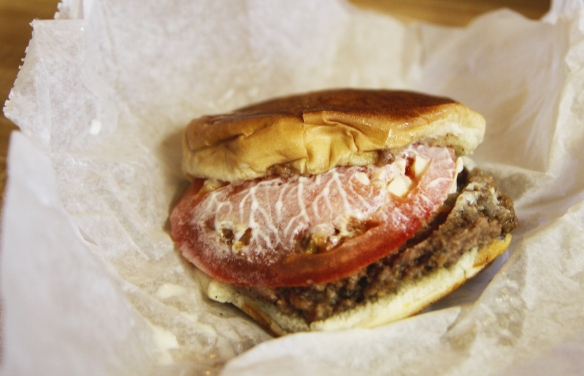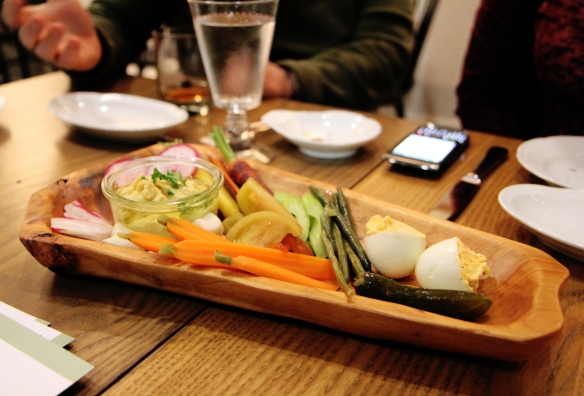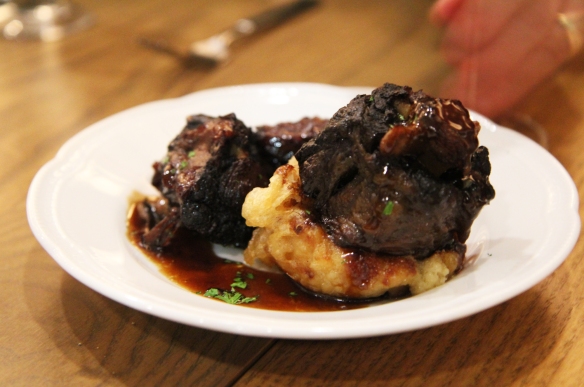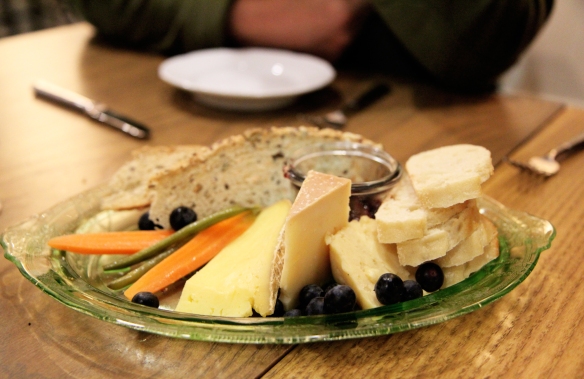
I have recently been re-reading the historian Barbara Tuchman, who back in 1986 posed this rather topical question: “Are we smarter than our technology?”
The eminent historian was worrying about teleprompters, at the time a still relatively new technology that some worried gave undue advantage to dim Ken dolls harboring aspirations of ultimate power and access to harems of emotionally unstable women. This would not do.
Tuchman called the humble teleprompter “a technological instrument developed to such wondrous perfection as to be actively harmful, because it can make a candidate for public office appear twice, no, 10 times, as intelligent as he really is and seemingly worthy to be entrusted with the complex and difficult decisions of national policy.”
She may have been right: more so, I suspect this worry applies somewhat disturbingly in the modern era to smart phones.
Perhaps most saliently, it applies to me and smart phones, something that was brought into stark focus after my Samsung Galaxy Note SIII was unceremoniously stolen in Saigon, an event that sounds like the sort of thing you’d warn your wide-eyed gap year student about before putting him on the plane to Djibouti.
You see, I didn’t just feel bad when I lost my phone. I felt considerably stupider — and not just because I’d been using it on a busy Saigon street in the first place. Here’s a brief look at why I felt this way.
Recent research and academic thought postulates that in the modern era, an intelligent person is not someone who can quickly recall copious quantities of information when called upon, the sort of skill that is widely applicable in both Jeopardy and in certain applications within the Supreme Court.
Instead, the supremely intelligent person of the 21st Century functions instead as a kind of brilliantly competent librarian, able to use the Internet to quickly summon up the entire human experience on a little glowing screen.
This modern genius can turn to the now-widely-accessible Internet to supplement their own knowledge, freeing them from the burden of retaining and memorizing scads of information. They need only a keyword to cogitate, and require only a well-appointed hive mind to draw conclusions, make references, and infer about their own situations.

The truly intelligent Millenial is thus an outsourcer par excellence. We have all somehow managed to become Encyclopedia Brown. In this, then, I am typical.
All who know me are aware I fall firmly into the category of people who have been rendered marginally intelligent largely by their mastery of glowing and increasingly tiny boxes: it has been so almost since I remember, as one of those loathsome Millenial whelps born into the Apple-and-learning-software zeitgeist.
If I buy into the logic promulgated by by both intelligent sounding editorial writers and Al Gore, then it stands to reason that I do not just feel smarter when I have got my smartphone with me at all times.
I am smarter.

AND THEN MY PHONE VANISHED INTO THE ETHER
When my smartphone was lost a few weeks ago in Vietnam, it was in a bizarre way akin to a amputation, or perhaps a memory-loss inducing brain injury.
When your phone goes missing in Saigon, there is jack-all you can do about it, as the cops have bigger things to worry about, and Vietnamese gangsters are capable of removing the SIM card and selling off a phone to a Laotian dirt farmer in the time it takes most of us to turn on our televisions. Recovery was not an option. Nor was buying another one in Asia, where they are quite expensive as compared to in the USA.
There was nothing for it: I was going to have to spend at least a month with a considerable chunk of my brain, in essence, missing. I had been suddenly kicked off the grid, and I suspected I would not much enjoy it.

PROFOUND EXPERIENCE FAILS ME
I did not anticipate enjoying it, but much of our culture would like me to believe that I would find it an enjoyable experience, sort of a delightful little vacation.
We live in an era in which going off the grid has become something of an act of remarkable nobility and bravery — and in which actually pulling such a thing off is becoming more and more difficult.
RV advertisements note that the purchase of their lumbering comfort-vehicles will help your kids reconnect with both nature and the manifold pleasures of hooking up a septic tank while your father shouts at you.
Office drones and executives alike brag to one another in the break-room about spending entire weekends without checking their Blackberry’s e-mail.

Students idolize the smelly real-life protagonist of Jon Krakeur’s “Into the Wild,” who boldly went off the grid in the 1990s and delved into the wilderness alone, filled with the belief that “it is enough that I am surrounded with beauty.” (He was later found dead and emaciated in a sleeping bag in a bus, but we can handily forget that.)
There is a common theme to all these efforts to disconnect, to become unreachable: a search for the profound, a return to simpler times when man could know himself, could hear the thoughts rustling around inside his own head — a voice that crieth in the wilderness, or something like that.
It has become a part of our modern mythos that to disconnect from technology is more than a little akin to reaching out and touching the divine. It is this same impulse that provokes the occasional naysayer to speak out against efforts to connect the third world to the mainframe, claiming that giving the noble savage access to Apple’s App Store and the Daily Mail will render him disconnected and pathetic, just like us.
The reasoning goes that we’d all be better off if we were rolling around in fields of clover and living off of the land, or at least organic co-ops. But is this back-to-nature impulse really that good for us? Is this really that fun?

NO, IT’S NOT FUN IN THE SLIGHTEST, ACTUALLY
Allow me to quote Milton, who might have had a thing or two to say about the digital revolution if he was actually alive: “The mind is its own place and in itself, can make a Heaven of Hell, a Hell of Heaven.”
I would apply this particular, profound Milton quote to the quotidian experience of waiting quietly in a car for someone to come back in from the store, for someone who has spent their entire life (somewhat) plagued with a rip-roaring case of ADHD.
That would be me.
The modern era is a remarkable balm for the ADHD afflicted and inventive: with the advent of smartphones, it is now almost impossible for us to ever experience boredom, which used to be our Kryptonite, our fateful heel.

Since I obtained a smartphone, I have looked up WWII facts while waiting to taxi off the runway at the New Orleans airport, live-Tweeted from a Cambodian bus, and drilled myself on Khmer words while waiting for interminable minutes in a ophthalmology waiting room: these were moments before my smartphone-d life that would have been spent either gazing out a window having neurotic and miserable thoughts, or reading the SkyMall magazine for the 12th-millionth time.
Instead, I am able to use this time learning things. I do not see this as a net loss. Further, I am accorded considerably last time to battle with my own neuroses, which I can only see as a net benefit.
So no: you can keep your quiet times of the soul. I much prefer to stave them off with mobile Chrome, the Kindle app, and a smidgen of Instagram.
I have at times enjoyed being disconnected, I will admit. It is easiest to enjoy such things when one is anticipating being cut off, and further, it is even easier when one is actually IN the wilderness, not when you’re still, on the surface of things, continuing to hang around suburbia and consume packaged food.
It is not quite enough to keep up all the trappings of modern society and computers and to just cut off a single, rather piddling aspect of life: for example, deciding heroically that one will forsake Facebook is probably not going to cut it. I want my repudiation of technology to be all or nothing.
I was off the grid for a bit over a week while trekking in India in 2010 and I recall that the experience was enjoyable, reliant as I was on conversation and books for entertainment: I mostly missed eating food that hadn’t originated in a can. And getting back to the Internet still felt as good — well, better — than that first civilized shower. Is this normal? It might be more so then we’ve been led to believe.
The allure of the Internet goes deep, deeper than many of us may wish to admit. Which leads me to my next point.
BUT WHY ARE YOU OK WITH RELYING SO MUCH ON A LITTLE MAGIC BOX?
Some, such as Nicholas Carr in his 2008 “Is Google Making Us Stupid,” admit that they are a little frightened by the prospect of our ever-increasing reliance upon artificial intelligence, with the substitution of smartphones for our own organic intellect.

Carr feels that the Internet lobby considers the “human brain is just an outdated computer that needs a faster processor and a bigger hard drive” — but then goes on to cite Socrates famous discomfort with the very invention of writing, which would allegedly cause them to be “filled with the conceit of wisdom instead of real wisdom.”
This gets at what I feel is the crux of the matter: we are deeply uncomfortable with these cognitive advances, but it is increasingly hard to formulate concrete reasons just why the very concept bothers us. Further, we have been complaining noisily about these cognitive advances since they began.
It is often merely neophobia: there are few arguments against this outsourcing of our minds, other than, I suppose, the reality that a person without a smartphone (such as myself) is suddenly rendered stupider.
It is also arguable that if the smartphone had not been invented, I would not have compensated with more inherent intellect. I firmly believe that I am more than myself when I have access to a smartphone or the Internet: I am cognitively enhanced.
It’s not just me who’s firmly embraced this shift from intrinsic intelligence to a reliance upon the hive mind.
Google is quite open about its ambition: founders Larry Page and Sergey Brin wish to re-wire our brains by means of little glowing magic boxes, or at least provide the convenient apparatus by which we can outsource our inquiries.
Indeed, world IQs appear to be rising around the world something of a refutation to the idea that those hours I spend gazing intently on Wikipedia in the car are rendering me pallid and idiotic.
Researcher James R Flynn speculates that this world IQ rise might be because technology has taught us to view the world with analytical “scientific spectacles”: our glowing little boxes have, relatively painlessly, managed to teach us to the test.

Some observers, such as Clark and Chalmers in their deeply prescient 1998 “Extended Mind,” argue that the gap between external and internal reasoning is tenuous at best: the two finallt conclude our minds are singularly well adapted “for reaching out and making the world, including our machines, an extension of itself.”
By this logic, we are not denying our true natures by embracing technology’s effect on the human mind: we are instead following the natural tendencies of the human mind.
By this logic, further: it is more unnatural to entirely repudiate technology then it is it to embrace it, as the natural consequence of a constantly-improving human intellect.
These are all lofty rationales for my distinct discomfort when something as seemingly unimportant as my smartphone went missing.
The reality is that I am willing to embrace my reliance upon a glowing box made by slave-labor in China to the fullest: because I am somewhat disgusted by the weak and wholly organic mind I am left with without it.
I may be in trouble if the universe ends and I am dropped into some sort of Cormac McCarthy dystopia: as things currently stand, and as the thrust of history indicates, I suspect I am instead batting for the right team.




























